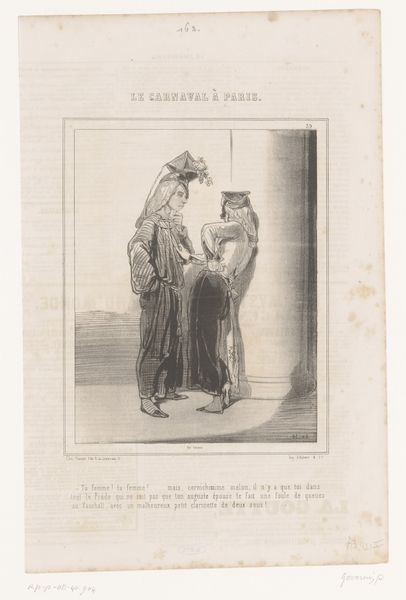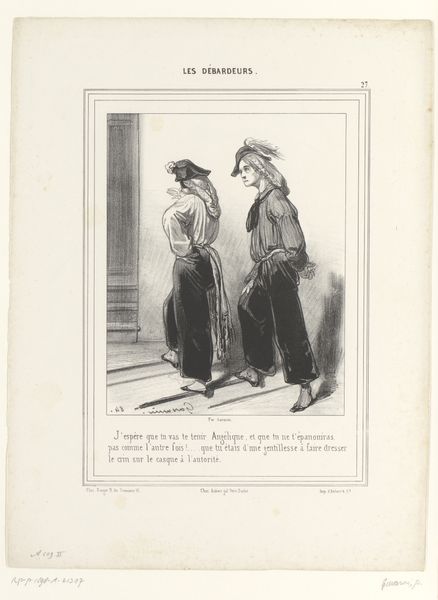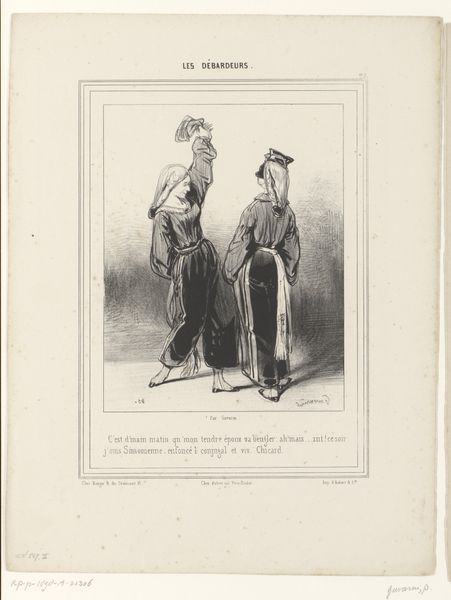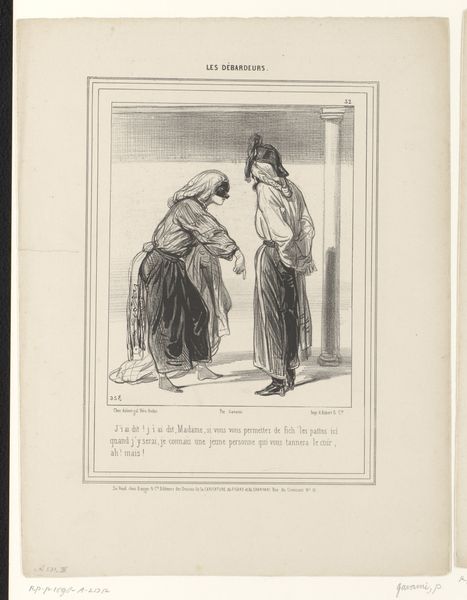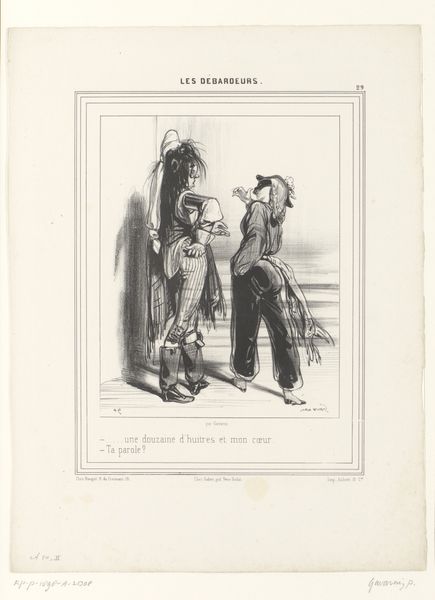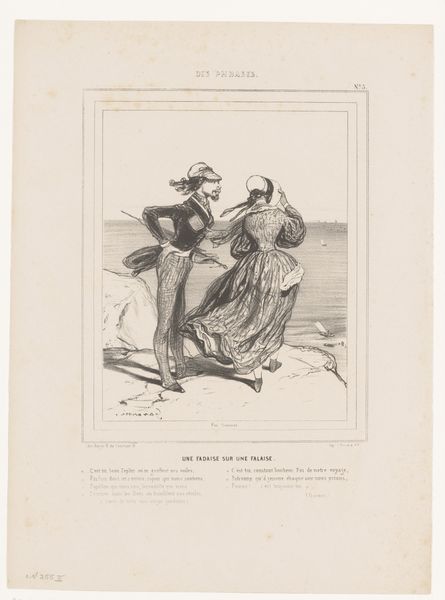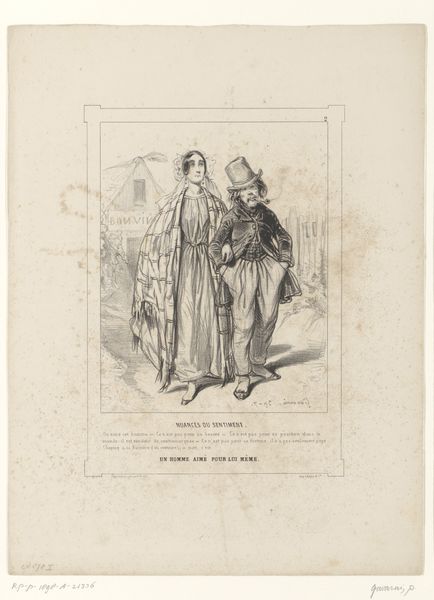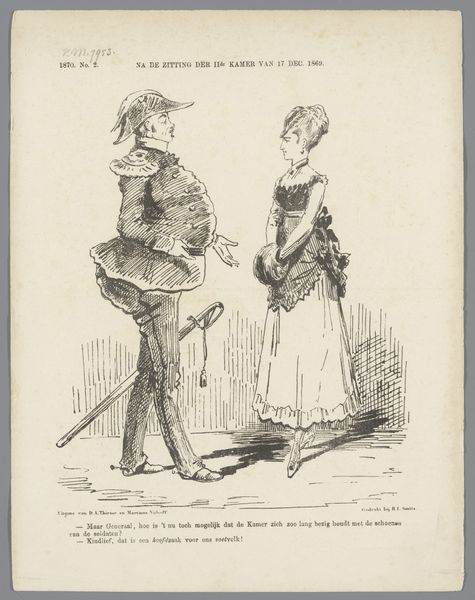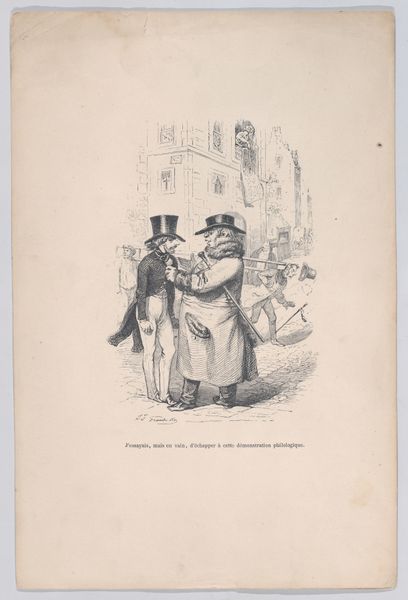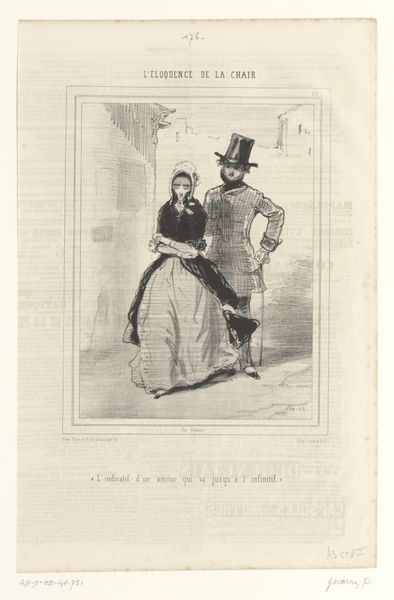
drawing, ink
#
drawing
#
16_19th-century
#
caricature
#
old engraving style
#
ink
#
romanticism
#
genre-painting
Dimensions: height 360 mm, width 275 mm
Copyright: Rijks Museum: Open Domain
Curator: Let’s discuss this ink drawing, “Stel gaat in de regen over straat” or “Stel walks in the rain in the street,” created around 1840 by Paul Gavarni. Editor: The stark contrast of the ink work immediately draws the eye. The hatching and cross-hatching define the figures, but there's a certain looseness, a gestural quality, that softens what could have been a severe rendering. Curator: Indeed. Gavarni, celebrated for his caricatures and genre scenes, was capturing Parisian life, particularly the experiences of marginalized figures. Notice how the scene seems to offer a glimpse into the social dynamics of the time, suggesting a narrative about class and possibly even gender roles in mid-19th century Paris. Editor: I am captivated by the linear construction, primarily with the two figures anchored by the sharp, receding horizontals of what seems to be a wall behind them. Look at how those repeated lines draw your eye through the entire composition! The drawing, housed at the Rijksmuseum, exemplifies the romanticism movement, a kind of social commentary rendered with ink on paper. It makes you wonder about the conversations around class happening at this time. Curator: I am with you, absolutely. This also appears to be a street scene portraying a moment in the lives of ordinary people and it's essential to consider that these people also lived through complex historical and social upheaval during this era. Editor: Agreed. I feel like the drawing does that so successfully because there is an emphasis on these clean, concise shapes and forms. It delivers an essential feeling, without romanticizing any narrative, as if Gavarni were intent on providing access to the most crucial emotional structures. Curator: Exactly. These types of pieces, as objects of art and history, ask us to consider our own positions in a world with very old and resilient class structures. Editor: An exquisite example of using formalism to draw us into considering the past and the present!
Comments
No comments
Be the first to comment and join the conversation on the ultimate creative platform.
